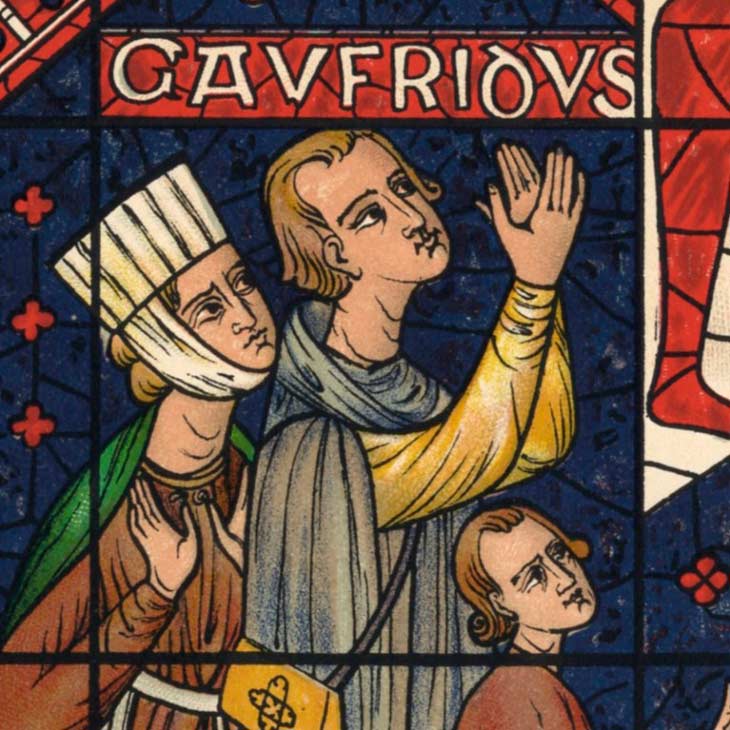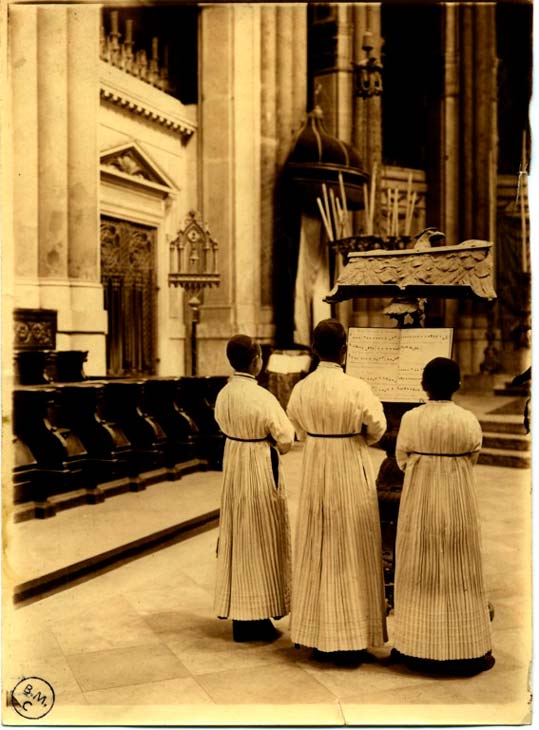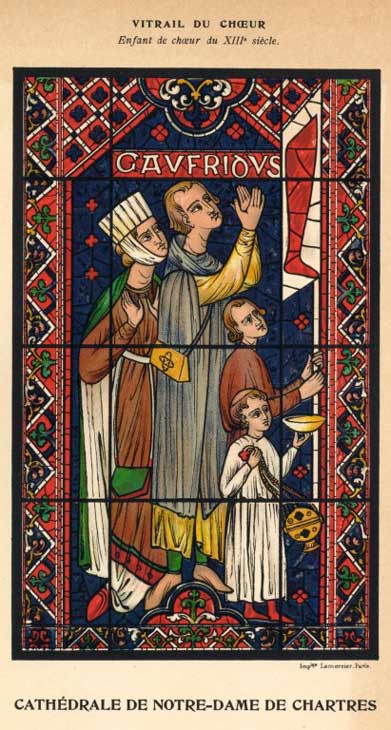
© extracted from the Clerval work, “The Maîtrise”
Our understanding of the ancient Maîtrise (choir school) of the cathedral primarily comes from the work of Abbé Clerval: “L’ancienne Maîtrise de Notre-Dame de Chartres du Ve siècle à la Révolution”, Paris, 1899.
Origins
Throughout history, harmonious voices have been sought to sing God’s glory. Naturally, schools were established near churches to teach singing; these were the predecessors of the Maîtrises.
In Chartres, as in many cathedral parishes, a clerical school was established as early as the time of Saint Lubin (6th century). It consisted of 72 young boys, dedicated to God by their parents or chosen by bishops for their virtue and talent. They studied letters, learned to sing God’s praises, participated in ceremonies, and pursued their education.
In 1127, as the music in Chartres became more complex, a group split from the episcopal school to focus primarily on singing: this marked the birth of the Maîtrise. Initially composed of six children, it would never exceed twelve members.
Organization
Children join the Maîtrise at around the age of 7 and leave when they are about 17. Initially, they were supervised by one master, and later by two: a grammar master, who lost prominence by the end of the 15th century to the music master. The first music master was Jean de Santander, and the last before the Revolution was Pierre Desvignes.
From the 14th to the 16th century, the young choir members, who were required to live together, moved at least seven times until, in 1545, a house was acquired where they would remain until the Revolution. This house, which still exists near the Officiality Gate (opening onto Rue des Lisses), included:
- a dormitory, converted into individual rooms in 1773
- a kitchen
- a study room
- an office
- an infirmary
- a room for the music master
- several rooms for the maid, visiting musicians, and others
Music masters were carefully selected through competitions. They could come from far away and were sometimes well-known composers, such as Nicolas Bernier (1664–1734).
Depending on the era, the choir members studied singing, composition, and an instrument. The organ remained the primary instrument, but by 1655, the serpent and bassoon were introduced. The double bass struggled to gain acceptance at the end of the 17th century, and the violin made a modest appearance in the 18th century.
The Choirboys’ Attire
The religious attire of young choirboys, who are shaved for all major celebrations, consists of:
- a cassock
- over it, an alb (this is why they are referred to as “children of the albs” in certain texts), which replaced the surplice in 1572
- a belt to cinch the alb at the waist
- starting in the 16th century, a shoulder cape (camail) for cold weather
- a small round hat (capelli), later a square one (birreta)

© Chartres Mediatheque
The Schedule of the Maîtrisiens
The day of the maîtrisiens begins at 4 a.m. The children take part in the liturgical services of the day, seated in the choir of the cathedral:
- Matins
- Lauds
- Prime
- The Mass of Beata
- The Mass of Obit
- The Chapter Mass
- Sext
- None
- Vespers
- Compline
In addition to these services, there are specific ceremonies for feast days or particular occasions.
The maîtrisiens’ study time is interspersed between the various liturgical activities: in the morning, they focus on Latin, the martyrology, and catechesis; in the evening, primarily on music. However, their schedule allows for some leisure time, which they spend playing skittles, bowls, or jeu de paume. A beautiful garden is available to them, and every Thursday, they go on an outing in the city unless a liturgical ceremony requires their presence.
Death of the Maîtrise
The Revolution abolished the Cathedral Chapter on December 25, 1790.
On January 8, 1793, the municipality reviewed the expenses and revenues of the Maîtrise. Faced with the announced deficit, it decreed the dissolution of the Maîtrise under the existing conditions of support. The music master’s residence was sold, along with the linens and trunks belonging to the Maîtrise household.
On November 15, 1793, the cathedral was transformed into the Temple of Reason, and the Maîtrise ceased to exist.
Renaissances
The Concordat of 1801 (26 Messidor, Year IX) specifies in its Article 1 that “the Catholic, Apostolic, and Roman religion shall be freely practiced in France.” The Maîtrise was thus revived… only to disappear again in 1969 under the episcopate of Monsignor Michon.
However, Father Hercouët, rector of the cathedral, successfully reinstated it in 1980.
